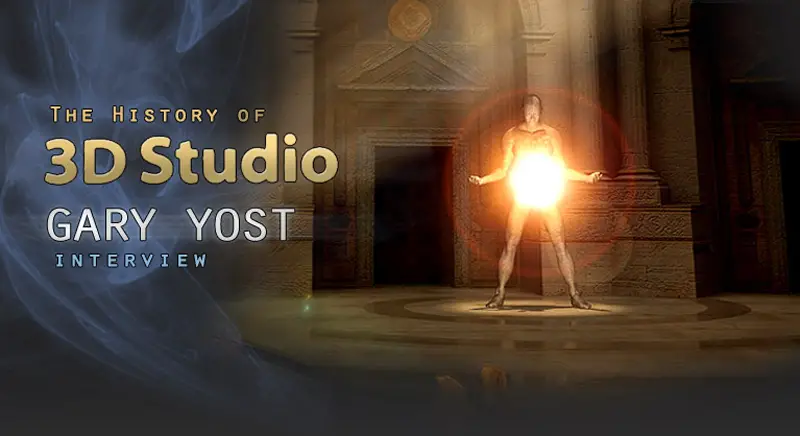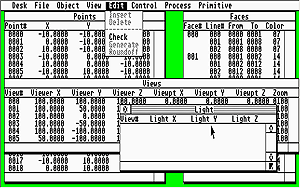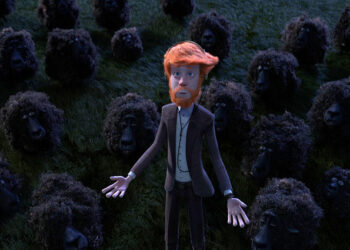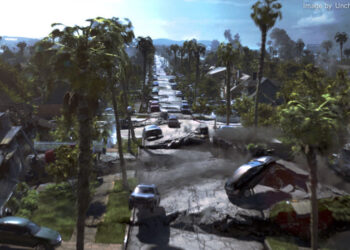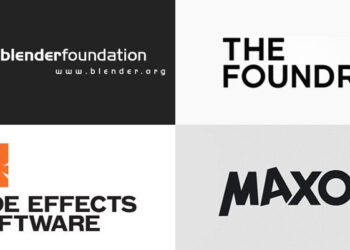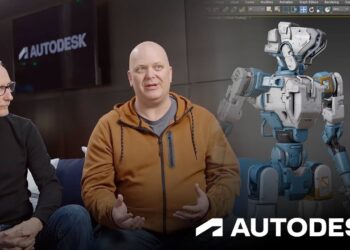By Dave Baker, Neil Blevins, Pablo Hadis
and Scott Kirvan
Foreword
In this double feature we have the great pleasure to present you with the history of 3D Studio as related by the head and leader of the Yost Group: Gary Yost himself. Gary shares his experiences of more than a decade of 3D Studio and 3DS Max development, along with many unique facts and anecdotes gained from his personal perspective as captain of the ship. In addition, he also takes a look at the evolution, current state and future of the CG Industry. For this occasion we are accompanied by the esteemed collaboration of Spanish artist José María De Espona, who had a prominent role in the creation of art that was used by Autodesk for 3D Studio’s promotion. José María shares the stories behind the production of some of the images that appear in this article, chosen by Gary Yost, which many 3D Studio / Max users will quickly recognize. Join us once again for another refreshing dive into the waters of 3D history.
The Interview
– What first attracted you to graphics software development, as opposed to another field of computing?
I had always been interested in photography and making short films when I was a teenager — at that time I thought that my future was in video or film production. When the Atari 800 was released in 1980 I saw that perhaps microcomputers would be able to support the creation of “interesting” graphics. The fact that the 800 had multiple co-processors to handle different graphics and sound functions seemed to indicate that micros were headed towards a fun place to play. That really sparked my imagination and led me to believe that possibly my interests in imaging could converge with computer tech in the future. It really didn’t take too long for that to happen… I founded Antic Software in 1984 and then when Tom Hudson showed me his little 3D prototype for the AtariST at Comdex in November 1985, a blindingly bright lightbulb popped on above my head. Really! It was an epiphany. We spent the next 2-1/2 years making the AtariST do things the Tramiel family never dreamed of.
– What made you decide to take Eric Lyons’s offer, jump ship from a comfortable position at Antic, and embark on the development of 3D Studio? What convinced you that Autodesk would be a good company to help bring that project to fruition?
First let me say that developing for the AtariST was a very limited game. Our market was small and the lack of expandability was really crippling. The display supported only 4bit color and I’d been hearing rumors of IBM launching the 8bit VGA display. Plus, on the IBM there were 3rd party 24bit framebuffers like the AT&T Vista and Targa cards. And of course the IBM was a commodity market, which had additional benefits of size and expandability. So when David Kalish and Eric Lyons at Autodesk offered us a development contract after Comdex ’87 it really just seemed the next logical step. Autodesk was having quite a bit of success with AutoCAD by that time and we felt comfortable with their laid-back experimental philosophy… very non-corporate with dogs in the hallways, weekly beer busts where ideas were shared, and a general good feeling. Plus it was just across the GG Bridge from SF where I was living at the time, in a beautiful part of Sausalito. It was a great situation.
– When did Dan Silva join the original 3DS development group? What unexpected tasks did you find yourselves fulfilling as the project grew over time?
This is an interesting story. Originally the 3DS engineers were going to be Tom Hudson and Jim Kent. The thinking was that after creating Autodesk Animator, Jim would start working on the keyframer while Animator was in maintenance mode. But you know how software becomes all-consuming and of course our Animator users wanted more features, more resolution, etc and Jim needed to get to work on Animator Pro, which ended up being quite an amazing app. (Aside: Jim later became a hero in the scientific world when he wrote the software framework which gave the Human Genome Project the ability to finish sequencing the genome 3 days before Celera could patent it.)
Tom had started work on the framework and modeler/lofter modules in 1988 and by summer of 1989 things were starting to look really interesting. I had been asking folks at Autodesk if they knew of any engineers who were interested in 3D animation for the keyframer position, and in August I was approached by Walt Spivak, director of product marketing, about his neighbor Dan Silva. Dan had developed DPaint for EA and literally over his backyard fence had been expressing his boredom to Walt. I called Dan and asked him if he might be interested in working with a little team on an interesting new graphics project for Autodesk, but I did not tell him it was specifically in the area of 3D keyframing. (I wanted to find out what he was interested in first, because my theory of putting development teams together was that the developer must have a passion for the task. That would potentiate much higher synergies and productivity than if the developer is arbitrarily given his marching orders.)
So, Dan came into a meeting room with us in September 1989 and we asked him what he wanted to do. He mentioned two things… one was a resolution-independent paint program and the other was a 3D keyframer. Bingo. Dan and I signed his contract at about 3pm on October 17, 1989… just 2 hours before the magnitude 7.1 earthquake that struck the SF Bay Area that day. I was in Sausalito at the Autodesk offices copying his contract on their Xerox machines during the earthquake. Those buildings were built on landfill, so you can imagine how much they moved. It was quite a day.
Regarding unexpected tasks… After 3DS DOS r1 shipped on Halloween 1990 we started getting lots of user feedback. It was obvious to all of us that there was gold in that feedback and I built systems to collect and organize it for future versions. Of course many of the feature requests were “unexpected”, but we took every request seriously and that became the hallmark of our future versions… user-driven features.
– What was the Yost group’s dynamic like? What was a typical day of work like?
The dynamic was… dynamic. We had taken on a pretty hefty responsibility coming from a small Atari software publishing operation and then being tasked to write the “AutoCAD of 3D animation”. You can imagine there was a fair amount of pressure associated with that. So we worked really crazy long hours. A typical workweek from 1988-1998 was 90-100hrs, and for the 3 months leading up to a release 110+hr weeks were de rigueur. Since we all worked out of our own homes and were in long-term relationships, we had enough support to make that possible, barely. We only took time off after a release shipped, so you can imagine what those 18-month release cycles were like.
A typical workday was just sitting in front of our PCs… for me mostly working on specs (2 days a week with Jack Powell), communicating and running tests. From the outside it would’ve appeared pretty fairly calm, but internally the pace was frenetic.
– Autodesk co-founder John Walker states in his Information Letter 14 (April 1991): “The very existence of the Multimedia group is an admission of the neglect for Animator after its hugely successful initial launch. If Autodesk had, in 1983, treated AutoCAD the way it treated Animator and 3D Studio after their introduction, Autodesk would not exist today. (…) Don’t touch the product. Just move the price down to where the early adopters can afford it.” How was 3D Studio perceived within Autodesk and the company’s Autocad-oriented development strategy? What was the Yost Group’s relationship with John Walker like?
I’m not sure what I’ve done with my copy of Walker’s historical book “The Autodesk File” [see Notes], but that’s a really incisive look at what was going on back then. I recommend it to anyone who wants to learn about Autodesk’s early days. 3D Studio was originally viewed internally as little more than a research project to see if it was possible to achieve workstation-level 3D graphics on a PC. Once 3DS/DOSr1 shipped and we started getting so much great feedback, the people at Autodesk began to see that a new franchise might be possible. For quite awhile we were the poor stepchild of the company but we slowly gained more and more respect from the CAD division. Eventually, once Autodesk acquired discreet logic in the late 90s, Max and the other DCC products began to be seen as a full-fledged franchise in their own right.
Our relationship with John Walker was friendly, and he was a great supporter of what we were doing. That said, he was stepping out of the day-to-day business of the company by the early 90s and on his way to new ventures. Most of my favorite memories of John were his show-and-tell moments at those legendary Friday afternoon beer busts. He’d bring in all sorts of new tech to share with us, including superconducting materials (in supercooled containers) and stuff like that. John is an extremely smart person… like nobody I’ve known before or since.

